Whatever happened to the Silicon Sandbar?
Around the turn of the century, the Cape Cod Technology Council marketed the Cape as such – a thriving high-tech paradise ready to go toe-to-toe with Silicon Valley, Route 128, and all other tech-centric places on Earth. That marketing plan has long been buried.
“A lot of people want to divorce themselves of the idea that the Silicon Sandbar ever happened,” said Peter Karlson, entrepreneur-in-residence for the Cape Cod Chamber of Commerce, and former president of the Cape Cod Technology Council. “It was a downturn bubbly kind of thing,” he said.
While many feel that the old audacious label was an overreach, and the Tech Council seemed to acknowledge as much when it stopped using the moniker, Bert Jackson, former president of the CCTC pointed out, “technology has become more ubiquitous in our lives than it was 15 years ago when the Silicon Sandbar was the thing.”
In other words, optimistically there is no longer a need to label Cape Cod the Silicon Sandbar because the whole world is now a silicon world.
“I think actually the opportunity now is much greater than it was back then,” said Paula Hersey, current president of the CCTC. “The ability to be a solo entrepreneur is amazing. If you have a support network and some bad-ass gumption, you can pretty make whatever you want.”
![]() Once Upon A Time, A Thriving Silicon Wannabe
Once Upon A Time, A Thriving Silicon Wannabe
In the late 1990s, about the same time that the Silicon Sandbar emerged, almost 100 other Silicon Valley wannabees popped up across America. There was everything from the Silicon Swamp to the Silicon Prairie, and here on Cape Cod, the Silicon Sandbar was “a grand vision,” said Karlson.
“The Tech Council got its start in 1994,” said Eugene Curry, general counsel for CCTC and chair of the infrastructure committee for CCTC. “It started with a group of tech people meeting at the Crack of Dawn, a breakfast place in Buzzards Bay.” After a couple of years of informal meetings, said Curry, CCTC was incorporated in 1996.
The tech council put out its first vision statement in the form of a newspaper article 10 years in the future, as if the future had already happened, said Curry. Yes, newspaper.
The future was going to be spectacular, according to the fictitious newspaper article, as recalled by Curry, and the Cape was soon branded as the Silicon Sandbar.
“I think there was this kind pie-eyed optimism that this was going to be the answer,” said Wendy Northcross, CEO of the Cape Cod Chamber of Commerce.
But at the time, it was not audacious at all. At the overly-exuberant time, anything seemed possible and there was, in fact, a thriving tech sector on Cape Cod.
“There are people who think that it was a bit of an overreach. I don’t know that I share that sentiment,” said Curry. “It got recognition for the Cape as a place to have potential to thrive. Some people think the Tech Council was overly ambitious, but the whole Internet boom was overly ambitious.”
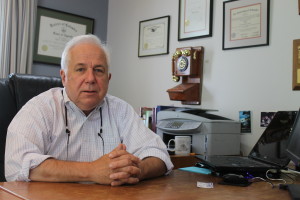
Eugene Curry, general counsel for CCTC: “If you looked at who was running these companies, they all liked sailing.”
Those were heady times, and things were happening on Cape Cod. Hersey recalled that she attended an event called “Surf The Silicon Sandbar” at Cape Cod Community College in spring 2000 and landed a job as executive producer of what she called “a portal website,” Capecod.com, which was developed by Matt Trask, who created Communica and Communicom in Bourne, she said.
“At that event, there were tons of companies looking for people,” she said.
“If you looked at who was running these companies,” said Curry, “they all liked sailing.” The Silicon Sandbar made perfect sense to them.
There were some well-known big companies in Hyannis back then, including Excel Switching and Software 2000.
“In the 1990s, in our heyday we had 400 employees working in this facility for Excel,” recalled James Carroll, who worked for Excel and is the Executive Vice President of Corporate Strategy & Business Development of Savant Systems in Hyannis.
And Curry recalled that after Software 2000 was renamed Infinium, the slogan on Cape Cod for rising tech companies was “To Infinium and Beyond.”
But bubbles burst, and sandbars are swallowed by the sea.
“It all blew up,” said Hersey.”Infinium went down. Excel went down. You think you’re living this great life, but your job only lasted three years. It was crazy. Yahoo stock was selling for a thousand dollars a share. It was so overvalued. There was all this fake money attached to it. And it disappeared overnight.”
But Hersey didn’t disappear. She reinvented herself.
Carroll didn’t disappear either. He also reinvented himself.
And so it seems with the Silicon Sandbar. All along, many say, one thing was missing. “The Silicon Sandbar was washed out to sea because there was no infrastructure,” said Felicia Penn, a member of the Core Planning Committee of the Smarter Cape Partnership, which is working to create a vibrant Cape Cod Community for the 21st century, according to their website.
“There was no broadband big enough. The pipes weren’t big enough to handle the data,” said Penn.
![]() Open Cape Starts Where The Silicon Sandbar Ends
Open Cape Starts Where The Silicon Sandbar Ends
When Curry first became chair of infrastructure committee for CCTC, he said, “We did a survey and the number one thing members were concerned about was a lack of access to broadband.”
As the Internet became increasingly important for everything, business leaders and community leaders became concerned about the lack of interest by commercial companies to provide good broadband to the Cape. This concern evolved into a nonprofit corporation, Open Cape, which was set up to deal with the problem and create a new broadband network for Cape Cod – a sort of if-no-one-else-will-do-it-we-will approach.
“The Cape Cod Technology Council, Cape Cod Community College and the Woods Hole Oceanographic Institution (WHOI) led the charge to set up an organization with local staff to find a solution and, most important, make the network a reality,” according to the Open Cape website.
This happened after the Dot Com bubble burst in the early 2000s and some of the bigger companies on Cape Cod had disappeared. Along the way, the whole idea of the Silicon Sandbar also disappeared. When Karlson became president of the CCTC, he said, “I came in at a time of great disruption.”
“We had a fairly large staff, Our revenue was not keeping up with our expenses,” he recalled. Staff was cut. The office of CCTC moved into the Cape Cod Chamber of Commerce, and a big focus was put on entrepreneurship. The lofty dreams of a Silicon label were put in the past.
But technology continued its incursion into all walks of life, even on Cape Cod. And the idea of a broadband network gained momentum.
There was a feasibility study for $75,000, said Jackson, and then $700,000 was spent on a plan. But building a broadband network on Cape Cod would take a lot more than that.
After the economy collapsed in 2008, said Penn, the federal government created the American Recovery and ReInvestment Act of 2009, and Open Cape applied for federal money. “Now was our chance to build this infrastructure. It’s just like the railroads did in the 1800s. If you don’t have broadband, you’ve got nothing for the future,” she said. “Its as important to the economy as blood is to a human being.”
According to Dan Vortherms, CEO of Open Cape, the completed 310 route miles of fiber cost $40 million – $32 million paid for by the federal government, $5 million by the state, and $3 million of private money. Additional to up to Brockton and down to Providence, said Vortherms.
It is built, but it is not completely built – at least not to most people or businesses on Cape Cod.
Most likely, you cannot hook up to Open Cape because what has been built is what is called the middle mile – which is the backbone running in a a sort of loop around the Cape. What is not built is the so-called last mile. That last mile, to neighborhoods, buildings, etc. is very expensive – $50,000 to $60,000 per mile, said Vortherms. “There are a huge set of factors involved in how much it costs,” he said.
![]() What is Open Cape, and Why Does It Matter?
What is Open Cape, and Why Does It Matter?
“Most people, if they have a decent Comcast connection, they’re fine,” said Jackson.
But some institutions, schools, businesses, and even individuals have a high bandwidth needs, said Jackson.
“If you are a high-data use customer,” said Vortherms, “speed is everything.”
Jackson said that typically on a Comcast connection uploading data is less than 1/3 as fast as downloading, and for large data files that is much too slow to be manageable.
“It’s a matter of degrees,” said Northcross. “Most people say to you, I can get my emails just fine. But now there’s the potential to attract another type of company here.”
Jackson said, “One of the people who inquired about Open Cape was a radiologist from Boston who has a house in Brewster.” The radiologist wanted a connection to transfer large medical files back and forth to Boston. It was not feasible without high-speed broadband, said Jackson.
The Open Cape network is a high speed fiber connecting to anchor institutions such as schools, libraries, town offices, and the Woods Hole Oceanographic Institution.
Open Cape is a non-profit corporation “run by a board of directors that live in the area,” said Vortherms.
“We own the network,” he said. “The strategy was to keep Open Cape as a small organization and outsource the operation of the network.”
Capenet is the for-profit company that operates the Open Cape network, said Vortherms.
So, the backbone is built. “The backbone runs down the glacial moraine of the Cape,” said Northcross. “And it goes to key institutions. If you aren’t near a key institution, it may be expensive.”
Connections to many anchor institutions were paid for by federal grants, said Vortherms.
There are even some Wimax connections, which was described by Curry as “sort of like Wifi on steroids.
One of those Wimax connections, said Vortherms, is to the Penikese School on Penikese Island, 12 miles off of Falmouth, he said.
Currently, said Vortherms, 96 customers buy broadband service.
“We want that last mile built out,” said Vortherms.
Once the last mile is built out, he said, “capacity is not an issue.”
It will help businesses and organizations that need broadband, and it may eventually turn into competition for Comcast, said Vortherms. “There are a couple of neighborhoods that have contacted us, and contacted Capenet, and there are a couple of evaluations going on,” he said.
Vortherms said, “There’s about $100 million a year paid from the Cape to Philadelphia (the corporate headquarters of Comcast). That’s why competition is good. The Cape is all about buying local in terms of produce, and retail. Broadband ought to be given the same consideration.”
In fact, more than one person pointed out that one side effect of Open Cape being built is that Comcast service on Cape Cod has improved. Of course, not everyone needs high-speed broadband, not even every business. As Vortherms said, “Joe’s Pizza Shop is not a high-bandwidth customer.”
But architectural firms, engineering firms, media companies, and many more are such customers, he said.
“We have the capacity now, provided the last mile is built, to equal any broadband in the world,” said Penn.
“We have more infrastructure now with the fiber network,” said Robert Cody, Dean of Math, Science, Business Technology and Workforce Education at Cape Cod Community College. “But when you look at the Cape as an entity, you don’t see the kind of infrastructure that you do in Silicon Valley or in Cambridge.”
Geographic business sectors do not occur in a vacuum. Quite the contrary.
For instance, Silicon Valley has a conglomeration of high tech companies, world-class talent, a desirable place to live, and, especially, the great feeder system to the high tech industry, nearby Stanford University. Likewise, the booming startup scene in Cambridge is very much fueled by students and graduate students, especially from MIT.
Meanwhile, Cape Cod Community College is a two-year college with two roles, said Cody: “Preparing people for the workforce, and preparing them for moving on to further their academic career.”
Noble goals, but not exactly a Stanford or MIT feeding system of high tech skills. “There is not a depth of coding at any level of the education system on Cape Cod,” said Cody.
“Most kids do very well with Facebook and using their phones,” said Cody. “But that’s not really understanding technology. They use the technology, but they don’t understand the technology.”
Curry said, “If you need 100 young programmers conversant in the latest programming languages, you may not be able to find that on Cape Cod.”
Carroll, CEO of Savant Systems of Hyannis, which employs 150 people on Cape Cod, said of those jobs, “Some of the coolest and sexiest jobs you can find out in the technology space, you can find that here at Savant.”
But Carroll also said there are Savant employees in San Francisco “writing software for the cloud. If you think about cloud computing, all those companies are out there. We could hire employees, pick them up from them and move them here, or we could open an office out there,” he said. From a recruiting standpoint, it was easier to get employees to take a bus, car or bike rather than uproot their lives, explained Carroll.
Leaders on the Cape have long recognized the issue. According to Curry, during the heyday of the Silicon Sandbar, CCTC hoped to start a Cape Cod Institute of Technology. That effort has since merged into cooperation with the community college on, most notably Open Cape.
But the talent base is not where some want. “There is sort of a chicken and egg problem,” said Curry. “If you want to attract off-Cape talent, they don’t perceive there is enough mass here.”
And Northcross said, “What we’ve heard point blank is if something fails in Cambridge, they’ve got five other options right there that they can walk into tomorrow.” In some areas of technology, she said, that critical mass is not perceived to exist on the Cape.
In part, that perception was what the long gone Silicon Sandbar was trying to eliminate. Perception 1, Silicon Sandbar 0.
But in the midst of this ongoing chicken and egg battle by CCTC exists an ecosystem with a sort of anchor research institution that has a reputation every bit on par, in its own field, with the reputations of Stanford and MIT. This, of course, is the Woods Hole Oceanographic Institution. Also in Woods Hole is the prestigious Marine Biological Laboratory, which is now associated with the University of Chicago.
![]() The Woods Hole Ecosystem Challenge
The Woods Hole Ecosystem Challenge
Speaking about the more than 100 scientists at WHOI, David Knaack, Director of Technology Transfer at WHOI said, “Everyone here is an entrepreneur in their own right. But they are a different kind of entrepreneur. They are in the business of research.”
Knaack’s job is find business opportunities to license the technology developed at Woods Hole for the commercial market. Describing his job, he showed the mission statement: “To facilitate the global use of innovations arising from Woods Hole Oceanographic Institution’s relationship with the sea.”
“What’s important about that is it doesn’t say anything about profit,” said Knaack, who prior to coming to WHOI was involved in four startups in things like tissue engineering, genetic engineering, and bio-materials.
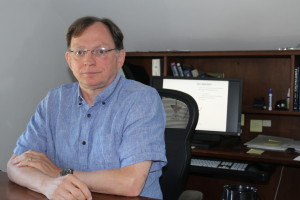
David Knaack. Director of Technology Transfer at WHOI: “You always ask, What is the market? Who would be interested in buying this?”
“A big part of tech transfer is marketing,” said Knaack. “We’re trying to make people aware of all the hot stuff. And if somebody thinks they can make money off of this, great. The idea is to return the gift, the gift of the American taxpayer to do research.” And locally, he said, “We’ve been given a gift of a tax-free property, so let’s return something.”
What is returned are big ideas that can start companies, and create jobs, often, in the words of Knaack, “fairly technical sciency type engineering types of jobs.” It starts with an idea, and then a patent, said Knaack.
“Something like 80 percent of our funding is government money,” said Knaack. “It used to be the government funded stuff and they owned the patent. Now we have the right to do what we want with the patents, with some restrictions of course.”
Jackson said, “Scientists like to be purists, and I appreciate that. Part of what is happening
is that funding for some of these institutions is harder and harder to come by. They are realizing that their intellectual property is worth money, and they are finding ways to leverage that.”
The goal is to get the technology out into the world, and help the world, while maybe making some money for WHOI at the same time. WHOI has granted 19 licenses, said Knaack. “In academics, in general, about five percent of gross sales are paid as a royalty, he said, noting that the percentage varies by patent. WHOI makes “on the order of a half a million a year,” from licenses, said Knaack.
“I’m not here to make money for Woods Hole but I do my job right and help the scientists, then Woods Hole will make money,” said Knaack.
According to Knaack, “If somebody comes up with an innovation that’s patentable, sometimes a company will show interest. More often than not, it’s the investigator themselves… Many of these scientists will come to my door and say, ‘I think I’ve got something.’ ”
Creating a business from the results of pure scientific research is challenging, said Knaack. “Some discovery gets made, that may be of interest, then we file a patent. That’s the front end of this,” he said.
“In the last ten years, there has been dramatic growth in patent activity at Woods Hole. But it costs a lot of money, $20,000 to $30,000 to file a patent,” said Knaack.
Just because you have a patent doesn’t mean you can make money, he pointed out. “That new invention has to be something that industry can say, that’s appealing.” Getting a scientific discovery to become a plausible business is so challenging, said Knaack, “We call it crossing the valley of death. It is a problem that lives in all of academia.”
Knaack said some of the science at WHOI is so amazing that he often walks away from a scientist bopping himself upside the head asking himself, “What did I just hear?
But then, he said, “You always ask: What is the market? Who would be interested in buying this?” Often, said Knaack, the research is so esoteric than there may only be 10 customers in the world for a particular idea.
And just as big of a question is, who would be willing to develop such a business? “Nine times out of ten, the investigator isn’t entrepreneurial,” said Knaack. “In their ideal world, they would pass it off to someone to advance it and commercialize it. The scientist would then be a consultant, not a day-to-day employee.”
Knaack recalled a conversation he had on this topic with someone from MIT, who said to him about Woods Hole, “It’s too bad you don’t have students down there. That’s where the energy comes from to start a company.”
Knaack agreed with this assessment. “At MIT and Stanford, a lot of the energy is carried by students and post-docs. I’m looking for the community of entrepreneurs who are looking to do startups, and are qualified. Not just money people. I’m talking about people with energy.”
As for the scientists, he said, “They are the rock stars.” Their dream of doing highest level research comes true every day, he said. So although he is encouraging new business to come from the scientist’s discoveries, he is not worried that WHOI will lose scientists to entrepreneurial ventures. “It’s silly to think about that. A researcher, their first love is research,” said Knaack.
And this is why he is actively recruiting entrepreneurs. Often, he said, a scientific startup requires that the new company build a prototype. “Where is that money going to come from? That is a riddle that has to be solved,” said Knaack. “We need to find these product champions.”
![]() The Woods Hole Marine Science Ecosystem
The Woods Hole Marine Science Ecosystem
Knaack said that WHOI and CCTC, as well as the Cape Cod Chamber of Commerce, are just beginning to work closer together. “There was historically nothing solid,” he said of the relationship with CCTC.
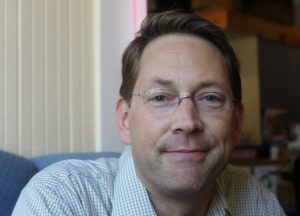
Peter Karlson, entrepreneur-in-residence at the Cape Cod Chamber of Commerce: “If you’ve got the entrepreneurial gene, you can shoot it at anything.”
And Karlson said, “The tech council has struggled to infiltrate that area.”
Hersey said the council believes the connection is so important that it is bringing its upcoming annual meeting to the top floor of one of the WHOI buildings. “If they’re not going to come to us in Hyannis,” she said, “we’re going to go to them.”
But all agreed that the connection has gotten stronger. Karlson said of his role as entrepreneur-in-residence at the Chamber, “I represent the economic development activities of the Chamber, especially when it comes to new businesses.”
“I am working with a Woods Hole entrepreneur on a Woods Hole licensed technology,” said Karslon. “We actually have a scientist who developed the technology and is handing it off. I want to recruit entrepreneurs to team up with scientists,” he said.
The prospective entrepreneurs do not have to be scientists, said Karlson. “If you have to have a natural curiosity about science, but also has to bring practicality for who the customer is, it can work,” he said. “If you have the entrepreneurial gene, you can shoot it at anything.”
Karlson said he has been meeting with Knaack and helping WHOI look at technology transfer through a new lens. “We’re forcing them to look through the lens of the customer, something they haven’t done before,” said Karlson.
He said he helps WHOI and others use an “evidence-based entrepreneurship model with a focus on product / market fit.”
Of course, there are already plenty of successful businesses that have spun out of Woods Hole, and found a nice product / market fit. Some started their businesses before WHOI began asking for a licensing fee, said Knaack. “At the time, it was go knock yourself out,” said Knaack of the policy.
“One of the big ones was Associates of Cape Cod,” said Knaack. “These are the folks, using the blood of horseshoe crabs, who developed a test to test medical devices for endotoxins.” There is worldwide market for this, he said, adding that many companies such as Associates of Cape Cod have donated money to WHOI.
Despite the struggles of CCTC to infiltrate WHOI, there are several businesses from Woods Hole, through North Falmouth and into Bourne, that are closely identified with marine science.
“Hydroid is the poster company for that corridor,” said Karlson. “The founders sold that company for $90 million (in December 2007 to Kongsberg Maritime of Norway). That’s a good example of what’s possible.”
Hydroid, located in Bourne, makes underwater robots. It is growing fast. According to Duane Fotheringham, President of Hydroid, the company had 120 employees at the start of 2014, and was up to 145 as of the end of July. He said the company plans to have 160 employees by the end of the year.
“Hydroid has an ocean market That is unique,” said Knaack, reflecting on the types of businesses that come out of WHOI. “The ocean market is not a big market.”
Fotheringham described the work at Hydroid as “low volume, high complexity manufacturing. These are highly skilled folks doing very specialized jobs.”
Hydroid makes several sizes of underwater robots that do things like find underwater mines, sonar, mapping and more. A Hydroid robot aided in the discovery of an Air France crash in water off the coast of Brazil. Hydroid has customers like WHOI, the US Navy and other governments, survey firms, oil and gas firms, said Fotheringham.
And while the ocean market is unique, Fotheringham said Hydroid has local and international competitors.
Fotheringham described the founding of Hydroid as coming from a lab in WHOI where scientists “were looking at solving science problems. They got the interest of the Navy, and started being funded by the Navy, but WHOI is not in the business of manufacturing.”
“That’s what happens down in Woods Hole,” said Fotheringham. “They are creating technology.”
He said, “There is a whole oceanographic community here. We do things in the ocean and under the ocean. This is the place to be.” And he added, “There are a large number of oceanographic businesses around here… There is a critical mass of oceanographic companies on Cape Cod.”
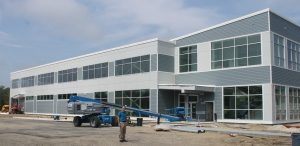
Duane Fotheringham in front of the soon-to-open new 40,000 square foot headquarters of Hydroid in Bourne.
According to Fotheringham, “When we built our new (40-000 square foot) building here, we considered should we move off Cape. But one big anchor is WHOI. That is something for our customers that is important – that we maintain that close relationship. Being located close is very important.”
Fotheringham said, “We started here. We stayed here. About 50 percent of our employees live here.” Others live within commuting distance, he said.
And the the connection between WHOI and Hydroid is “a mutually beneficial relationship,” said Fotheringham. “We do fund research. We collaborate on a lot of projects.”
And Knaack said, “Hydroid helped us tremendously.”
That’s how ecosystems work.
![]() Solopreneurship, The Creative Economy, & A Different Silicon Sandbar
Solopreneurship, The Creative Economy, & A Different Silicon Sandbar
Meanwhile, in Hyannis, said Carroll, there is still a thriving tech community that exists, in large part, with the former employees of Excel and Infinium, many who have gone on to reinvent themselves into smaller companies in the area. That recruitment by the big companies from years ago has manifested itself, he said.
“There’s a lot more here than meets the eye,” said Curry.
“You just see smaller companies now,” said Carroll.
“The Silicon Sandbar was maybe 15 to 20 companies Cape-wide,” recalled Hersey. The new model for technology is very different, she said.
“You think you want a company to come in and hire 35 people, and everybody gets benefits,” said Hersey. “That’s not going to happen.”
“On Cape Cod, a lot of people start jobs,” said Karlson. “We are really good at solopreneurship, but not so good at job creating.” Karlson said that is why he is focusing on Woods Hole and other places for “high potential entrepreneurs with scalable ideas.”
But Hersey had great optimism about what she called the creative economy. “It’s been around a long time. It doesn’t just encompass pottery, paintings and photography. Now it could be somebody making a digital widget.”
“Look at the maker movement… You wouldn’t believe what people are making on Cape Cod,” said Hersey. “There’s this guy down in Eastham, Chris Stroh. He makes robots, kits for Boy Scouts and schools for them to use to teach kids programming.”
![]() The Robot Maker At Rocket Brand Studios, & The Future of The Silicon Sandbar
The Robot Maker At Rocket Brand Studios, & The Future of The Silicon Sandbar
In his basement in Eastham, Chris Stroh, who is also known as Christopher Robinson and Chris The Carpenter, showed off his 3-D printer that he made by printing it out of his other 3-D printer. The owner and sole employee of Rocket Brand Studios, Sproh makes robot kits that individuals, schools, organizations, universities, and other use as a tool to learn programming.
Stroh described his robot kits as a hands-on and fun way to learn programming. The idea behind the robot kits, he said, was that someone would be learning code by writing commands, essentially code, and then getting to watch a robot with a small micro-controller, which he called “a robot brain,” act out those commands. At first, the commands would be very simple, such as “make a light blink,” and then, “drive forward.”
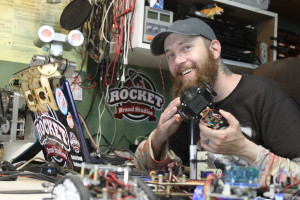
Chris Stroh of Rocket Brand Studios, builds robot kits in Eastham: “I live in a world where people just want to make cool stuff, and we just want to inspire each other.”
“The only way your robot is going to get more cool is if you learn more code,” Stroh said of the whole idea.
It was a niche he has gone for, and after six years in business, he said he is successful and growing. But Stroh said he has no interest in being anything more than a one-man operation. His basement is part automated factory, part machine shop, and part studio for his online tutorials. There are other parts as well to this one-person business.
Stroh said there is a strong community of makers on the Cape. “I live in a world where people just want to make cool stuff, and we just want to inspire each other.”
Hersey said, “The creative economy includes almost every citizen on the Cape. We’re trying to open people’s eyes to what is here on Cape Cod. There’s the opportunity to create whatever business you want. There are enough resources. The spirit is here.”
From the one-person Rocket Brand Studios making robot kits to the growing-past-150-person Hydroid making underwater robots, and all other robot and non-robot businesses involved in technology, Cape Cod no longer needs to pretend to compete with Silicon Valley or Cambridge.
Maybe Cape Cod just needs to be Cape Cod. “The sandbar name is not a bad one,” said Northcross. “The ocean is our strength.”
Curry said, “On Cape Cod, the square-footage is less expensive than in Cambridge, and you can still thrive here.”
“There is a real ongoing discussion going on about what is the best way to promote technology on the Cape,” said Curry. One thought is to create incubators, like in Kendall Square, near MIT.
On Cape, said Curry, “There are a lot of relatively small businesses involved in technology.”
So maybe the Silicon Sandbar really never went away. Maybe it is just evolving into what it was meant to be. Carroll, of Savant, who has been around since the glory days of Excel, said, “The Silicon Sandbar is still alive and well.”
Silicon Sandbar? In order to read this story about technology on Cape Cod, you need technology.
– Please like us on Facebook.
![]() ** Please support independent local journalism.
** Please support independent local journalism.
See the DONATION BUTTON AT THE TOP OF THE PAGE **![]()
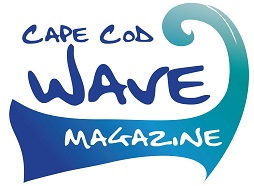


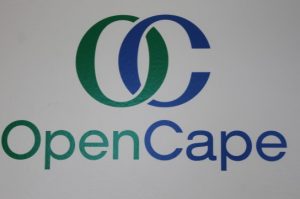
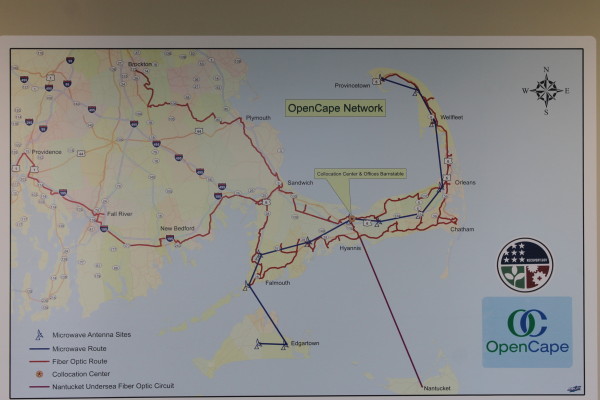
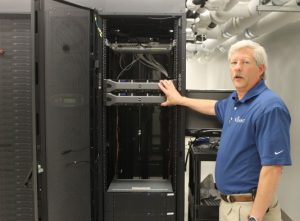

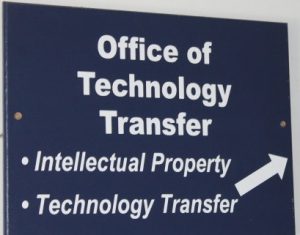
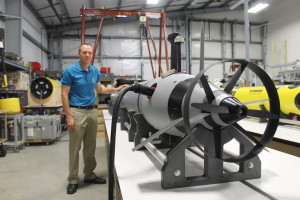
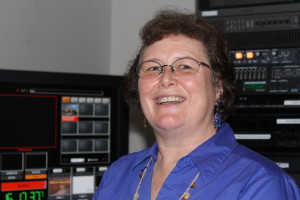


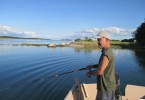
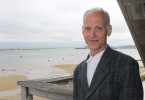
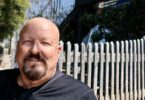

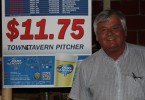





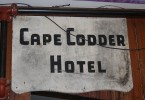
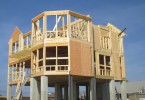
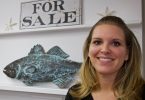
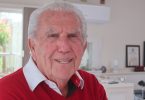







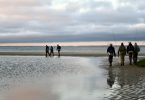
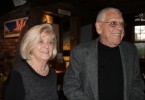

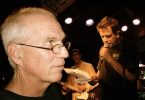
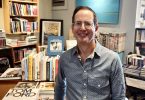
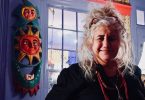

Nice article and introduction into Technology on the Cape.
When talking about infrastructure you really need to address the lack of modern facilities on Cape Cod to start up a small Tech focused business. Peter Karlson and few others setup Venture Hyannis which could have been such a great incubator for small technology companies that grow into medium and large companies that can really make change here.
How about redirecting some of the Chamber of Commerce tourist funds to setup 4-5 of these placed around the Cape strategically. Startups like 37 Signals, Pinterest, Uber, Buffer, Snapchat and the like were at one time single person ideas that grew up to viable large tech based businesses with Series A funding and so on. These business can have a fully remote work staff and that solves the lack of talent pool here on the Cape in the short term.
Generally someone that is going to develop one of these ideas will need some modern space to work on their business. Clean facilities, great internet connection and peace and quite. Although the library system here is one of the best that is not a place that a startup will thrive. Coffee shops are a viable option either. This doesn’t currently exist here.
I’ve been working in Tech down here on the Cape fulltime for 7 years and find it very difficult to find a place to work since Venture closed. I have a home office and I work heads down most of the time. What if we had collaboration and ideas flowing between people that we were on startups? That’s how ideas develop.
—
Chris Gillis
Interactive Designer
Silicon Sandbar-great archeological discovery. T
Hey Chris- The Chamber is developing a Launchpad space in our main building at exit 6 off Route 6 in Hyannis area for just what you suggest. We will have this space available at no charge. And while we’d love to redirect tourism grants, that just isn’t kosher with the state – but we do work to pull down some development grants that are making this happen! Stay tuned, should be done before the snow flies!